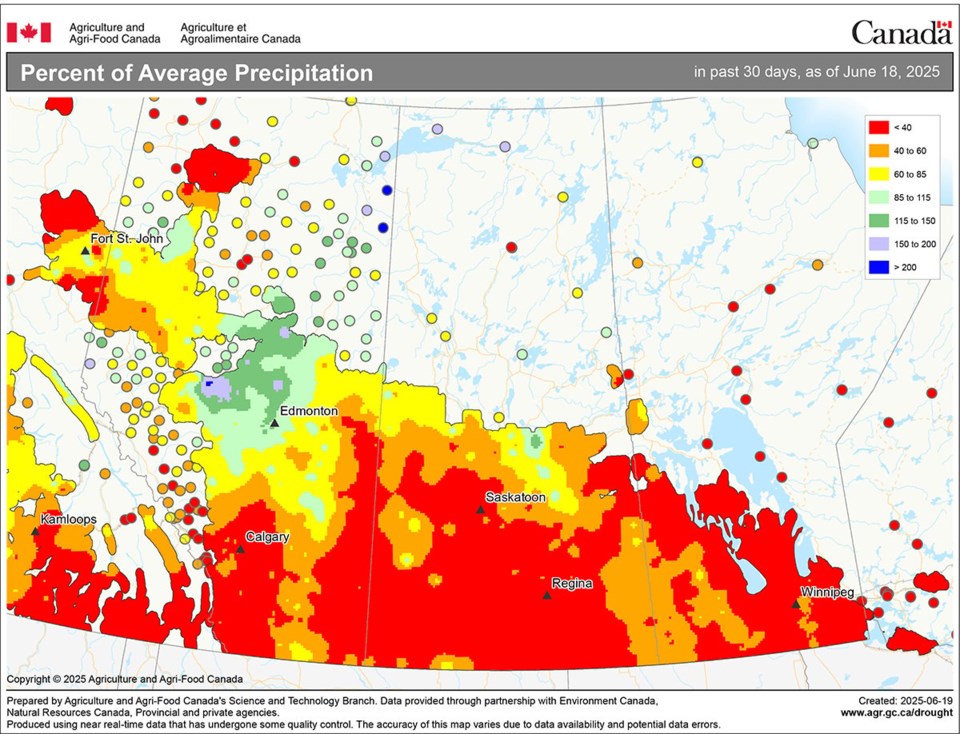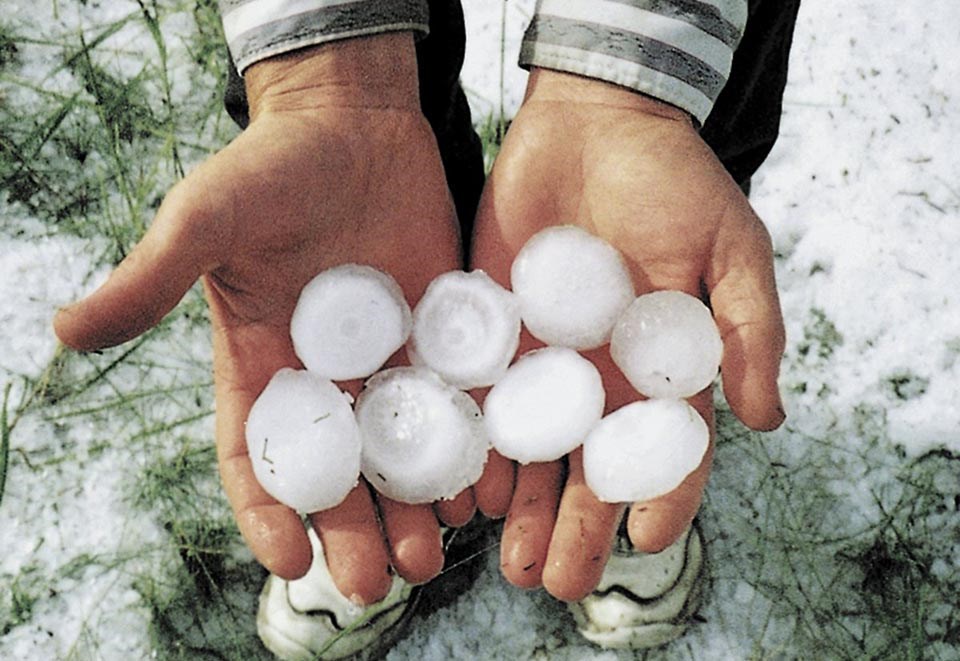WESTERN PRODUCER — In this issue we dig into the topic of severe summer weather by looking at one of the most feared and costly summer severe weather events, and that would be hail.
Most thunderstorms will produce hail; the question is whether or not the hail will grow large enough to make it to the ground without completely melting. As we have already discussed, a very low freezing level helps this happen, because the hailstone only has a short distance to fall through the relatively warm air. Another way to keep a hailstone from melting before it hits the ground is to start off with a really big hailstone. This is one of the main reasons Alberta sees so much hail compared to everyone else in Canada. The topography of Alberta is such that, while ground temperatures can be really warm, the freezing layer is not that high up relative to what it might be in Manitoba.
Now, here is where a second common misconception about thunderstorms and hail lies. To get really big hailstones you do not necessarily need a really tall thunderstorm. Hail forms when a particle passes from the warm (liquid) part of the cloud into the cold (freezing) part of the cloud. When this occurs, any water on the particle freezes and you now have a small hailstone. Now, if that hailstone just kept going up towards the top of the thunderstorm it wouldn’t accumulate much more ice and therefore it would remain small. For hailstones to get really big they must go back into the warm (liquid) section of the storm, pick up more water, then go back up into the cold section of the cloud so the water can freeze. Repeat this cycle a number of times and you can get some really big hailstones.
 Spring Precipitation – This week’s map shows the total amount of precipitation that has fallen across the Prairies over the 30-day period ending June 18. The area stretching from southern Manitoba westward towards Calgary has been extremely dry. This map does not account for the rain that fell across a large swath of the Western Prairies the weekend of June 21. | Source: Environment Canada, Agriculture Canada
Spring Precipitation – This week’s map shows the total amount of precipitation that has fallen across the Prairies over the 30-day period ending June 18. The area stretching from southern Manitoba westward towards Calgary has been extremely dry. This map does not account for the rain that fell across a large swath of the Western Prairies the weekend of June 21. | Source: Environment Canada, Agriculture Canada
The hard part to try to understand is just how strong of an updraft you need to keep a hailstone in the air. I started asking questions to one of the AI chat programs. At first it did not help much, but with the right series of questions I was eventually able to come up with these numbers. A 250-gram object, which is a little smaller than the Canadian record of 292 grams, would take an updraft of about nine meters per second. Convert that into kilometres per hour and you get an updraft of around 32 km per hour. Updrafts in thunderstorms are often in the 10 to 20 metres per second range and can, at times, approach 40 m per second – which is more than 100 kph! This means the speeds needed are usually present in most thunderstorms to keep even the heaviest hailstones in the air. If updrafts speeds are not usually a problem, then what limits the size of a hail stone? It is the size or area of the updraft and its duration that sets the limit as these two things in turn determines how long the hail stone can remain in the updraft.
In the next issue, depending on the weather, I will either do an early monthly weather review or we’ll continue our severe summer weather series with a look at what is often the most damaging event, straight-line winds.
For more , visit Daniel Bezte’s full archive.
About the author
Related Coverage

